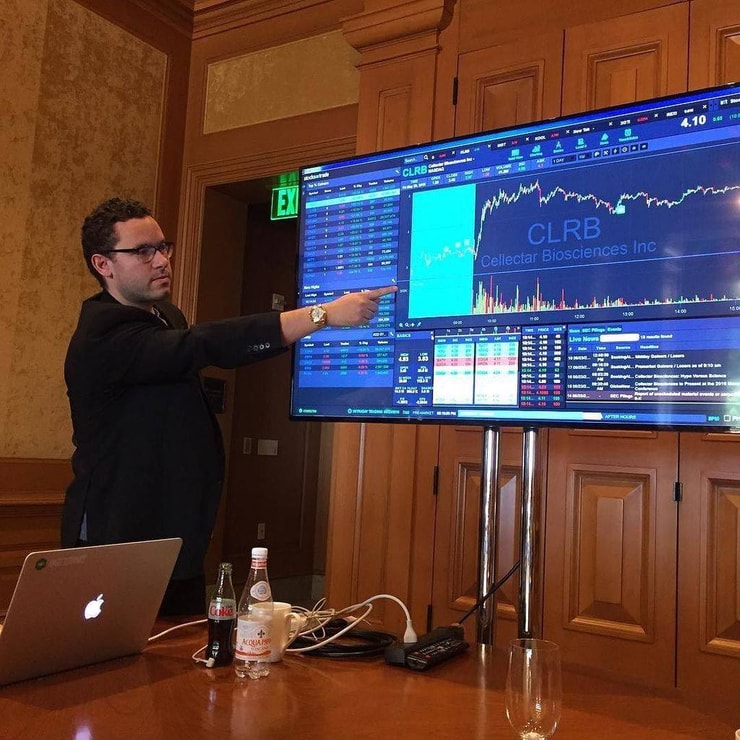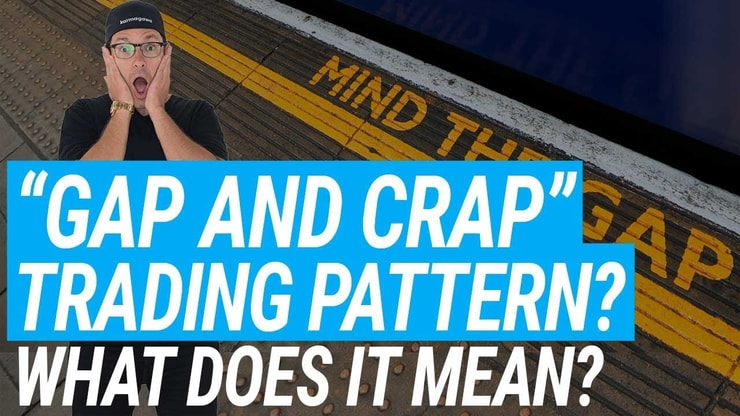Gap trading is a strategy that capitalizes on the price gaps that occur in the market due to various factors, such as economic indicators, earnings reports, or significant news events. This technique is what investors and other buyers place their belief in a company on — but these moves can be leveraged for trading too!
Gap trading is a blend of technical analysis and market observation. It’s a strategy that requires precision, quick decision-making, and a thorough understanding of market volatility. Whether you’re a seasoned trader or someone just stepping into the trading arena, this guide will provide you with a comprehensive understanding of gap trading.
From understanding what gap trading is, its benefits, how to identify price gaps on a chart, to the different types of price gaps like breakaway gaps, exhaustion gaps, and continuation gaps, we’ve got you covered. We’ll also delve into some practical tips for developing a gap trading strategy, key considerations when building a strategy, and how to effectively use technical analysis tools like the Fibonacci retracement tool.
Are you ready to bridge the gap and seize the opportunity? This article will show you how!
Table of Contents
- 1 What is Gap Trading Strategy?
- 2 Types of Price Gaps
- 3 Identifying Price Gaps on a Chart
- 4 Reading Price Charts
- 5 Analyzing Volume and Activity Levels
- 6 Using Technical Analysis Tools to Identify Support and Resistance Levels
- 7 Developing a Gap Trading Strategy
- 8 Factors to Consider when Building a Strategy
- 9 Benefits and Risks of Gap Trading
- 10 Key Takeaways
What is Gap Trading Strategy?

Gap trading is a strategy that traders use to take advantage of certain price gaps that occur in the market. A price gap is a break between prices on a chart that occurs when the price of a stock makes a sharp move up or down with no trading occurring in between.
For example, let’s say a stock closes at $100 one day and then opens at $110 the next day. This $10 gap could be the result of after-hours news or an earnings report. Gap traders aim to profit from this by predicting whether the price will rise or fall from the gap.
Explanation and Overview of Gap Trading Strategy
The gap trading strategy involves identifying price gaps and making trades based on the anticipated price action following the gap. This could involve buying a stock after a gap up in anticipation of further upside movement, or selling a stock after a gap down in anticipation of further downward movement.
Demand after these gaps might move in the other direction as well. Price gaps can often be volatile and unpredictable, and there’s no guarantee that the price will move in the anticipated direction. Therefore, it’s crucial to use other technical analysis tools and risk management techniques when gap trading.
While gap trading is a powerful tool, it’s important to remember that it’s just one of many strategies available to traders. Diversifying your trading approach can help you navigate different market conditions and optimize your trading performance. For instance, day trading is another strategy that focuses on short-term trades based on small price movements. If you’re interested in exploring this further, check out this comprehensive guide on Day Trading Strategy. It’s crucial to have a well-rounded understanding of different strategies to make the most informed trading decisions.
Types of Price Gaps
There are several types of price gaps that can occur in the market, each with its own implications for traders.
Understanding the different types of price gaps is essential, but it’s equally important to know how these gaps can be influenced by various trading strategies. For instance, a reversal trading strategy can sometimes lead to price gaps as market sentiment changes.
To learn more about how this strategy works and how it can impact price gaps, take a look at this detailed article on Reversal Trading Strategy. The more strategies you’re familiar with, the better equipped you’ll be to interpret price gaps and make effective trading decisions.
Breakaway Gaps, Exhaustion Gaps, and Continuation Gaps
Breakaway gaps occur at the end of a price pattern and signal the beginning of a new trend. They are typically accompanied by high volume and can provide significant trading opportunities.
Exhaustion gaps occur near the end of a price trend and signal that the trend is coming to an end. They are often followed by a reversal in price direction.
Continuation gaps, also known as runaway gaps, occur in the middle of a price trend and signal that the current trend is likely to continue. They are typically accompanied by high volume and can provide opportunities for traders to add to their positions.
Identifying Price Gaps on a Chart
Identifying price gaps on a chart is a crucial skill for gap traders. Here’s how you can spot them:
Techniques for Spotting Price Gaps on a Chart
Price gaps are relatively easy to spot on a chart. They appear as a break between the high of one day and the low of the next, or vice versa. The larger the gap, the more noticeable it will be on the chart.
You can use charting software to help identify price gaps. Many platforms offer tools that can automatically highlight gaps on a chart, making them easier to spot.
Remember, not all gaps are created equal. The size of the gap, the volume during the gap, and the subsequent price action can all provide clues about the potential trading opportunities.
Reading Price Charts
Reading price charts is a fundamental skill for any trader, especially those using gap trading strategies.
Here’s how one of my millionaire students does it:
Understanding Common Price Patterns and Trends
Price charts can reveal a wealth of information about a stock’s price history and potential future direction. By understanding common price patterns and trends, you can make more informed trading decisions.
For example, an uptrend is characterized by higher highs and higher lows, while a downtrend is characterized by lower highs and lower lows. Recognizing these trends can help you anticipate potential price movements and identify trading opportunities.
Analyzing Volume and Activity Levels

Volume and activity levels can provide valuable insights into the strength of a price trend and the likelihood of a reversal.
Importance of Volume and Activity in Gap Trading
In gap trading, volume is a crucial indicator. A price gap accompanied by high volume is often a stronger signal than a gap accompanied by low volume.
High volume during a gap indicates strong investor interest and can signal the start of a new trend. Conversely, low volume might suggest a lack of conviction, and the gap could be filled quickly.
Using Technical Analysis Tools to Identify Support and Resistance Levels
Support and resistance levels are crucial in gap trading. They can help identify potential entry and exit points for trades.
Utilizing Tools for Determining Support and Resistance in Gap Trading
Support and resistance levels can be identified using various technical analysis tools. One of the most common methods is to use horizontal lines on a chart to mark areas where the price has previously bounced off.
Support levels are price levels at which a stock has historically had difficulty falling below, while resistance levels are levels that a stock has had difficulty rising above. If a price gap causes a stock to break through a support or resistance level, it could signal a potential trading opportunity.
I use StocksToTrade to scan for support levels — its algorithmic Oracle Support and Resistance Levels indicator helps me identify these levels in a flash! I helped design it to target the type of quick-changing data that traders rely on…
It has the trading indicators, dynamic charts, and stock screening capabilities that traders like me look for in a platform. It also has a selection of add-on alerts services, so you can stay ahead of the curve.
Grab your 14-day StocksToTrade trial today — it’s only $7!
Developing a Gap Trading Strategy

Developing a gap trading strategy involves several steps and considerations.
As you develop your gap trading strategy, it’s beneficial to explore other trading strategies that can complement your approach. Swing trading, for example, is a strategy that aims to capture gains in a stock within an overnight hold to several weeks. It can provide a different perspective on market trends and price movements, which can be particularly useful when dealing with price gaps. To delve deeper into this strategy, check out this article on Swing Trading Strategy.
Steps and Considerations for Creating a Gap Trading Strategy
There are a number of steps and instruments to harness to put in place before you put your hard-earned money on a gap trade…
Identify the Type of Gap: As mentioned earlier, not all gaps are created equal. Identifying the type of gap can help you determine the potential trading strategy.
Analyze Volume and Activity Levels: High volume during a gap can indicate strong investor interest and a potential start of a new trend.
Use Technical Analysis Tools: Tools like support and resistance lines, moving averages, and oscillators can help confirm your analysis and provide additional trading signals.
Manage Your Risk: You can use stop-loss orders to limit your potential losses. Never risk more than you can afford to lose.
I use manual stop losses for stocks I trade. The reason for this? I work with signs of price movement — Level II data for example — not just the results after the fact.
Factors to Consider when Building a Strategy

When building a gap trading strategy, there are several key factors to consider.
Key Factors to Evaluate in Gap Trading Strategy Development
Market Conditions: The effectiveness of a gap trading strategy can depend on overall market conditions. For example, in a volatile market, price gaps may occur more frequently, providing more trading opportunities.
Risk Tolerance: Gap trading can be risky, and it’s important to consider your own risk tolerance when developing a strategy.
Trading Experience: Gap trading can be complex and requires a good understanding of technical analysis. If you’re a beginner, you might want to gain more experience before trying gap trading.
Benefits and Risks of Gap Trading
Like any trading strategy, gap trading comes with both benefits and risks.
Advantages and Disadvantages of Gap Trading
One of the main advantages of gap trading is the potential for high profits. Price gaps can result in significant price movements, and traders who correctly predict these movements can make substantial gains.
Another advantage is that price gaps are relatively easy to spot on a chart, making gap trading a straightforward strategy that even beginner traders can use.
However, gap trading also comes with risks. Price gaps can be volatile and unpredictable, and there’s no guarantee that the price will move in the anticipated direction. Additionally, price gaps can often be filled quickly, which can result in losses if the trader does not act fast enough.
Key Takeaways

Gap trading is a strategy that involves identifying and trading price gaps in stocks or other assets. It can produce results, but it also comes with risks. Successful gap trading requires a good understanding of technical analysis, an ability to read price charts, and effective risk management.
It isn’t a silver bullet for your trading plan — but gap trading is one of many techniques you should learn as part of your trading education!
Trading isn’t rocket science. It’s a skill you build and work on like any other. Trading has changed my life, and I think this way of life should be open to more people…
I’ve built my Trading Challenge to pass on the things I had to learn for myself. It’s the kind of community that I wish I had when I was starting out.
We don’t accept everyone. If you’re up for the challenge — I want to hear from you.
Apply to the Trading Challenge here.
Trading is a battlefield. The more knowledge you have, the better prepared you’ll be.
Have you tried gap trading? Let me know in the comments — I love hearing from my readers!





Leave a reply